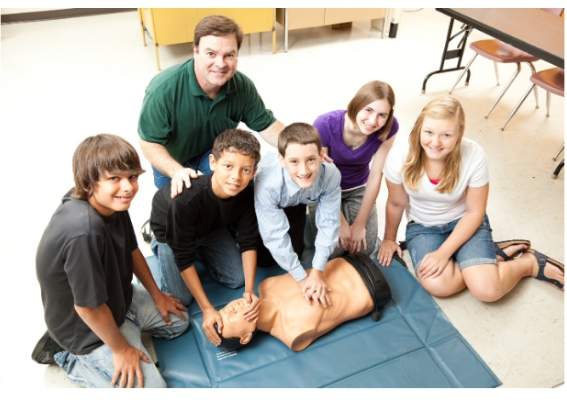Table of Contents
Is the cut on your child’s finger too deep to put pressure directly parents on the wound? Do you have no idea what to do and are just pouring water on it?
You need to learn some fundamental first aid skills for your own peace of mind. There may be a time when you’re the only person available to come to your child’s aid.
There are some basic steps you can do without knowing the whole process involved. Learn how to put pressure on an open wound, apply a bandage, and run to the hospital.
CPR (Cardiopulmonary Resuscitation)
CPR, or cardiopulmonary resuscitation, is an essential skill, as it can help someone’s chances of survival in critical moments. Everyone should learn the basics of CPR, as it can save a life. It involves rescuers providing chest compressions to the patient, as well as rescue breaths, to circulate oxygen throughout the body.
Parents should research how to perform CPR and first aid skills correctly, as well as be familiar with the new guidance that the American Red Cross provides. It’s best to earn a First Aid Certification course so you acquire the necessary skills and knowledge you need to be prepared-it’s worth it.
Choking Response
One of the most serious and potentially life-threatening situations is choking. Basic first aid skills such as the Heimlich maneuver can help to quickly and effectively dislodge an obstruction in the airway, saving a life. Understanding how to recognize an obstructed airway is also critical.
Signs of choking include:
- coughing
- difficulty breathing
- inability to talk or cry
If the victim is conscious and can cough, encourage them to keep coughing to try and dislodge the obstruction. This involves standing behind the victim and positioning your hands just above their navel.
Treating Wounds
Cleaning the wound of dirt or debris, preventing infection, and applying pressure to help slow or stop the bleeding are some of the primary skills needed to properly treat wounds. It’s important to use clean gloves when touching the wound and to also keep the wound clean with saline solution or hydrogen peroxide.
If the wound is deep and needs stitches, it is best to see a doctor, however, you can use sterile gauze and bandages to cover the wound when necessary.
Recognizing And Managing Allergic Reactions
The most common signs and symptoms of an allergy include hives, swelling in the mouth and throat, difficulty breathing, sudden drop in blood pressure, and unconsciousness. Parents should always look out for these signs and take the appropriate steps if they suspect an allergy.
If someone is having an allergic reaction, the first thing to do is to administer an injection of epinephrine if available. It is also important to call 911 if needed. Parents should also be aware of any triggers, such as foods, insect stings, or medications, that may have caused the reaction and avoid these in the future.
Take Time To Get Informed About First Aid Skills
Knowing the basic fundamentals of first aid and how to implement them in an emergency can help save a life. Thankfully, with today’s accessible knowledge base, parents can easily access the proper pieces of training and tools to obtain and practice the necessary skills. Make sure to review essential first aid skills with your family today!
If you liked this guide and you want to read more like it, then check out our blog! Here, you will find similar and even better articles written by our own experts!
